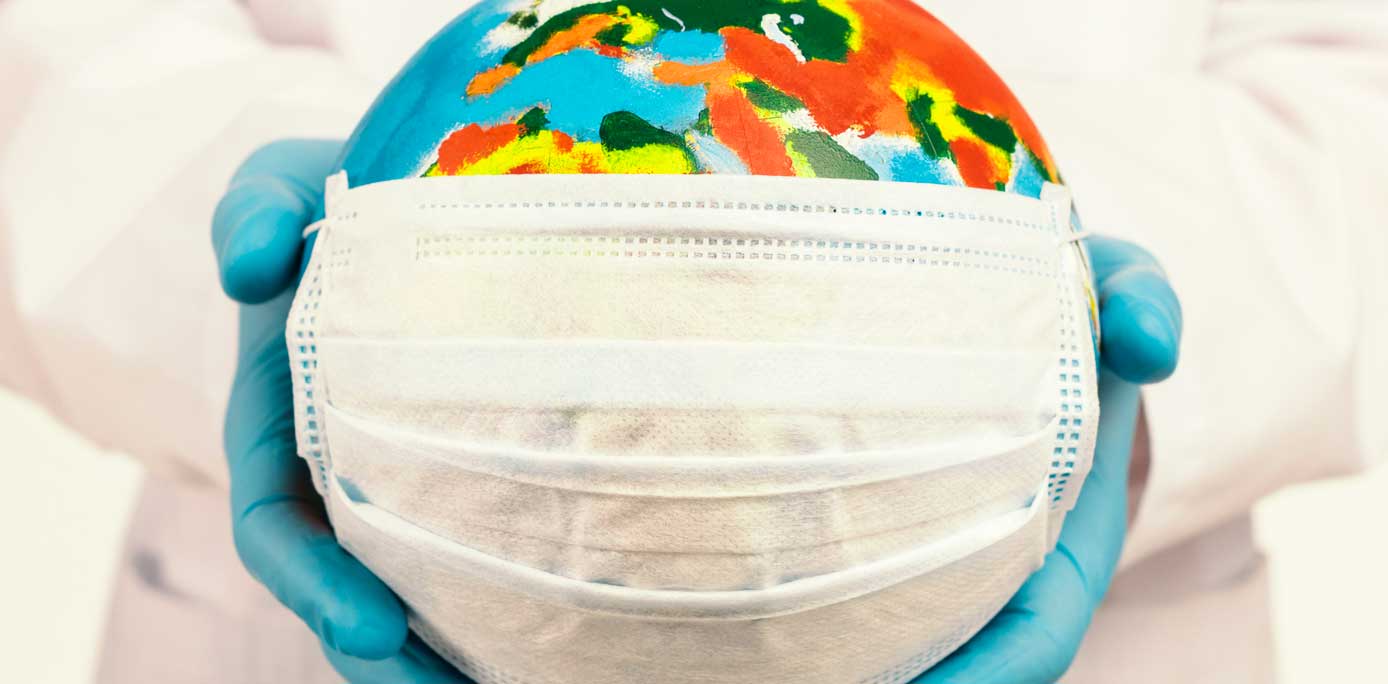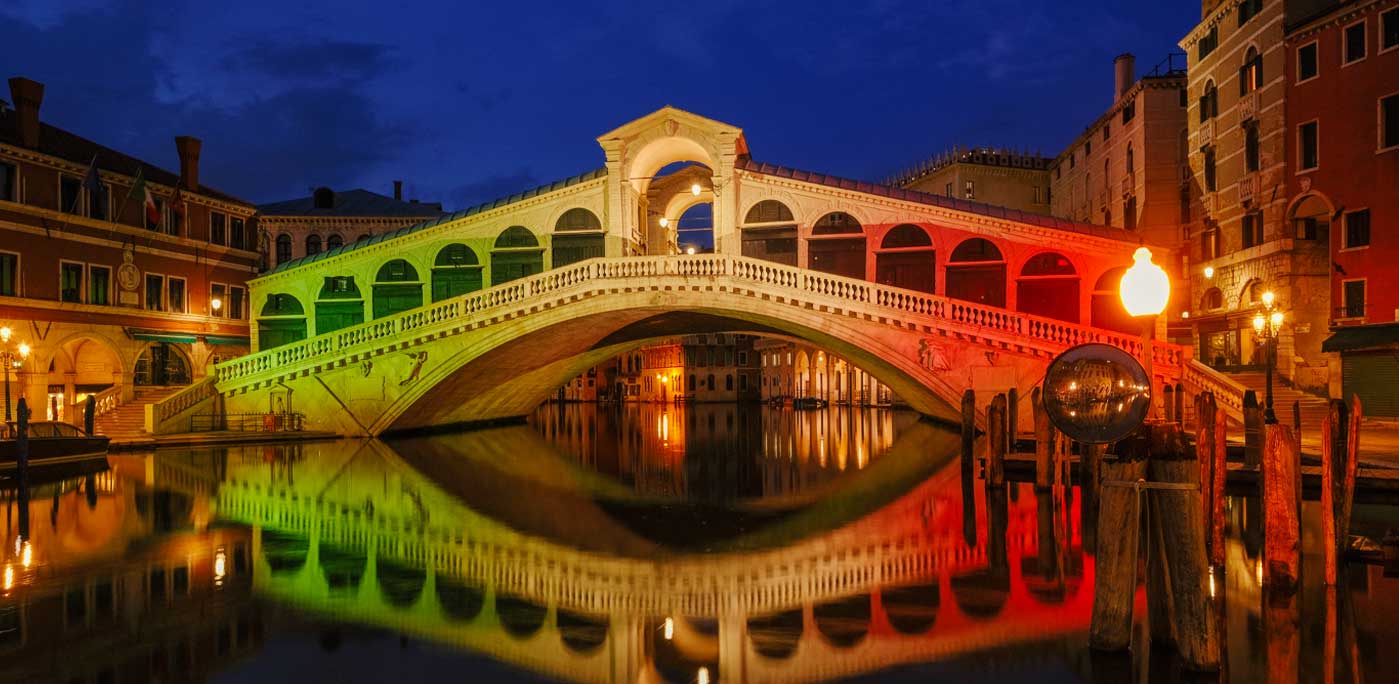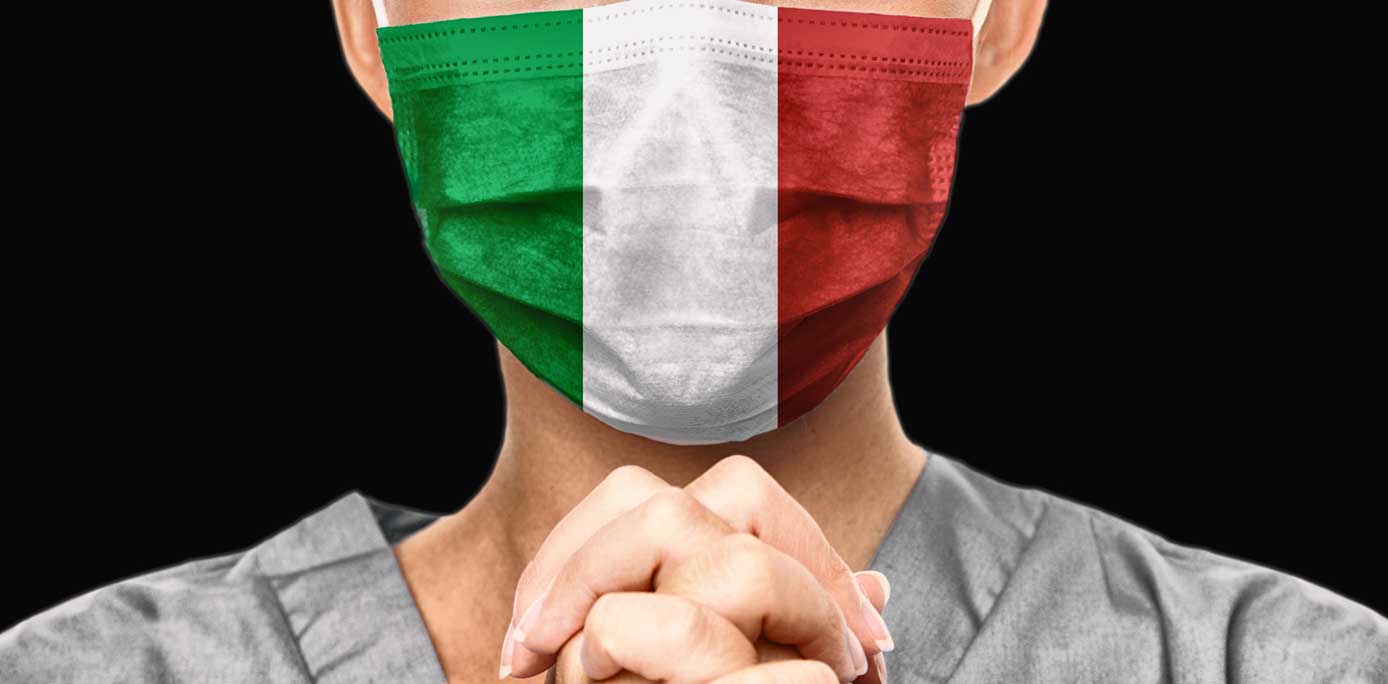We’ve been coyly rising our hopes in Italy, but we know the emergency is far from over. The infection has been slowing down, but 800 deaths every day leave us all breathless, just like the virus. Because of the virus, through the loss of many of their elderly, of the historical memory they represented, many villages have been emptied.
On Tuesday, 31st of March, while New York registered more victims than those caused by the 9/11 attacks, and Italy had already surpassed 100.000 cases of the virus (confirmed through tests, but the number is likely to be much higher), Taps resonated in Italy. All mayors stood outside their town halls to remember all the victims of the pandemic, our tricolor flying at half mast while a trumpet’s melancholic notes travelled through the streets and alleys of towns and cities entirely empty, deserted, still, surreal. A minute where, on the faces of all mayors fighting hard to manage the emergency, one could read the pain for all the people who died alone, without even the comfort of a funeral.
Cities, towns and villages, from North to South, all understood they are on that same boat Pope Francis mentioned on the 27th of March, before his unusual Urbi et Orbi blessing. We are all in the same storm. A storm that started in the East and arrived all the way here, on the West Coast, a devastating tsunami that brought shock into our existence and daily lives. Italy seemed far, but now Central Park is home to a field hospital and the hospital ship USNS Comfort is anchored in the port of New York, our first coronavirus emergency cluster.
On that date, more than 11 million Italians followed the worldwide broadcast of the Pope’s celebration in a desolatingly empty St Peter’s Square, under the rain and a dark sky filled with heavy clouds. A heavy, plumbeous atmosphere, perfect portrait of the historical moment we’ve been living. It couldn’t be more theatrical, more powerful in communicating the sense of bewilderment every one of us feels face to face with an unknown virus, an invisible, yet most powerful enemy.
Even for a lay person, it’s been a powerfully symbolic moment.
First, we saw a small man, alone in that immense, empty, silent, dark, rainy square. A man who, tired and alone, exposed — as he was to say shortly after — “our vulnerability, revealing all those fake and superfluous reassurances that made up our agendas, our projects, our habits and priorities.”
Then, cameras focused on the 15th century wooden Crucifix, usually kept in the San Marcello al Corso church, in Rome: a piece of history of the Eternal City and of the Church, because it was carried through the city in 1522 to stop the plague, and in 2000 on occasion of the Day of Forgiveness celebrated by Pope John Paul II who, in a chasuble reverberating with colors, embrace it, tired and in pain. It had survived a fire in 1519, but it couldn’t avoid the rain, water drops running on the ancient wood like tears.
The silence during the last blessing was interrupted only by bells chiming and ambulance sirens, the only thunderous noise that, today, fills the air of Italian cities. A noise that is also terrifying because everyone knows that ambulances are probably carrying Covid-19 patients to the hospital. A source of anxiety, of course, but we shouldn’t forget that, on those ambulances, we also find the incredible dedication of doctors and nurses who have been fighting an unfair war, a war which could truly cost them their lives and is certainly detrimental to their families. Many of them haven’t seen their children and partners for weeks. But the sacrifice of healthcare practitioners, supported by the “staying at home” of 60 million Italians aimed at severing the chain of infections, has been finally bearing fruit, if it’s true that the virus has been slowing down.
“We finally realized — Pope Francis said — that we are all on the same boat, frail and confused, but important and necessary at the same time, all required to row in the same direction and in need to comfort each other. We’re all on this boat, all of us.”
It will be an awkward Easter, this year, with different church rites, without the suggestive Via Crucis of the Colosseum; it will keep everyone at safety distance and locked indoors without parents, brothers and sisters sitting at the same table; we won’t have, on Pasquetta, the traditional countryside trips that usually inaugurates Spring and leads to the April and May Bank Holidays, usually the first moment of proper business for tourism, a sector that will have a horrendous year. This is why we’d like to invite you to do something.
While giving you and your families all our best wishes for the celebrations about to come, we’d like to ask you to make a donation to the Protezione Civile Italiana, which created one bank account to collect funds used to equip hospitals, buy ventilators for ICUs and PPEs for doctors.
L’Italo-Americano keeps reaching out to Italy, just as he had done with the fundraising created after the devastating earthquake that razed l’Aquila’s historical centre or, in 2012, to support the reconstruction, along with the Italian Consulate in LA, of the Teatro Comunale di Ferrara.
Emergenza Coronavirus: IT84 Z030 6905 0201 0000 0066 387. BIC: BCITITMM.
Funds will be sent to all Italian regions, because the emergency is everywhere, throughout the country. There are critical issues, everywhere, from North to South: the North has a larger number of infected, while the South has less functional and up-to-date structures. Please help, if you can.
#ItalyStayStrong
The Italian Embassy in Washington DC and ISSNAF have partnered to provide relief to Italy, as the country fights the coronavirus outbreak. Join us!
The funds will be devolved to three Italian medical and research institutes that have been at the forefront of the outbreak and continue to relentlessly fight the pandemic:
– the Lazzaro Spallanzani National Institute for Infectious Diseases in Rome,
– the Luigi Sacco Hospital in Milan,
– the Cotugno Hospital in Naples.































